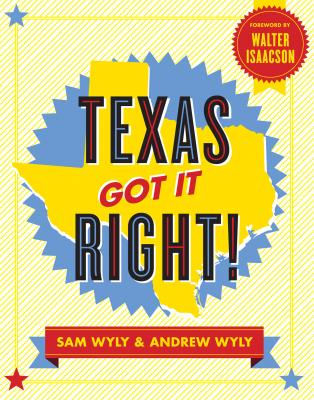ТОП просматриваемых книг сайта:
Texas Got It Right!. Sam Wyly
Читать онлайн.Название Texas Got It Right!
Год выпуска 0
isbn 9781595910769
Автор произведения Sam Wyly
Жанр Экономика
Издательство Ingram
the slogan “Come and Take
It,” 187 of their brethren
(including nine
Tejanos, or Texans of
Mexican descent)
met their end at
the point of a bay-
onet or barrel of
a gun, fighting
bitterly, to the
last man and
Bowie knife, at
an old Spanish
religious outpost
called the Alamo. A
The Alamo, originally named Mis-
sion San Antonio de Valero, was a
home to missionaries and their Indian
converts for almost seven decades
before it was secularized in 1793.
few weeks later, Mexican troops massacred 342
Texan prisoners at Goliad, where an early version of
the Texan Declaration of Independence had been
signed. But the Texas rebels were not deterred.
They’d thrown in all their chips with a perilous
cause—that of independence from a dictatorship—
and they were going to take that cause to its
conclusion.
TEXAS GOT IT RIGHT!
21
After the massacres at the Alamo and Goliad (see pre-
vious pages) in 1836, Sam Houston’s army was being
pursued by General Santa Anna. Things were not
looking good. Of course, that
is exactly the kind of moment
when a Texan likes to double
down. Which is just what Sam
Houston and his men did.
Taking up positions in a forest
next to the plain where Santa
Anna and his troops had set
up camp, Houston became the
pursuer. On the afternoon of April 21, 1836, his
Texans charged their enemy, shouting, “Remember
the Alamo!” and “Remember Goliad!” The Battle of
San Jacinto, as this fight came to be known, was over
in eighteen minutes. Santa Anna’s troops were
routed, and he was taken prisoner. A month later he
signed the Treaties of Velasco, which laid the founda-
tion for Texan independence. The men of Sam
Houston’s army hadn’t
buried the memory of the
Alamo and Goliad; they ral-
lied around it. Those Texan
fighters, whose democracy
had been usurped by Santa
Anna, knew in their hearts
that to keep fighting was the
only way forward.
Top: Uncle Alfred Wyly leads the charge in Charles Shaw’s
depiction of the Battle of San Jacinto. Above: A banner, based
on the Mexican flag, that was flown during the Battle of the
Alamo and afterward. The provinces of Zacatecas and Texas
both rebelled when Santa Anna usurped their freedom, which
had been guaranteed by the Mexican Constitution of 1824.
TEXAS GOT IT RIGHT!
22
What filled the empty expanses of early Texas with
Scots-Irish and other migrant settlers wasn’t just a
hunger for land; it was a longing for the security
and livelihood that land ownership brought to a
family. The father of the Texas Republic, Stephen F.
Austin, recognized that early on. So did Austin’s
cousin, Mary Austin Holley, who was so inspired by
the magnanimous opportunity that Texas offered
newcomers of every background that she wrote a
book about the place in order to inspire more
people to come here: Texas, a History, the first
English-language chronicle of Texas, published in
1836. Three years later, Stephen Austin, as presi-
dent of the young republic, pushed through a
homestead act, which protected homesteaders from
creditors who might seek to possess their land and
property. The act also guaranteed every citizen or
head of household “fifty acres or
one town lot, including his or her
homestead, and improvements
not exceeding five hundred
dollars in value.” Similar provi-
sions and protections have been
enshrined in Texas’s state constitu-
tion ever since. They’ve also guided Texas policy
when it comes to property ownership—for example,
protecting homeowners from overleveraging them-
selves to the banks by setting a commonsense
minimum for down payments, a fact that helped
steer Texas clear of the housing meltdown that trig-
gered the Great Recession.
Top: The “Lone Star Flag” was adopted as the national flag of
the Republic of Texas in 1839. Today it is the Texas state flag.
Above: Mary Austin Holley.
TEXAS GOT IT RIGHT!
23
Texas is strong and self-sufficient by design. It is the
only U.S. state to have joined the union by treaty—in
1845, when the sovereign Republic of Texas voted to
join the union. Texas bargained hard with the federal
government to win favorable terms and became
unique among states by keeping full control of her
public land. Texas also retained control of the repub-
lic’s historic coastal waters, which

